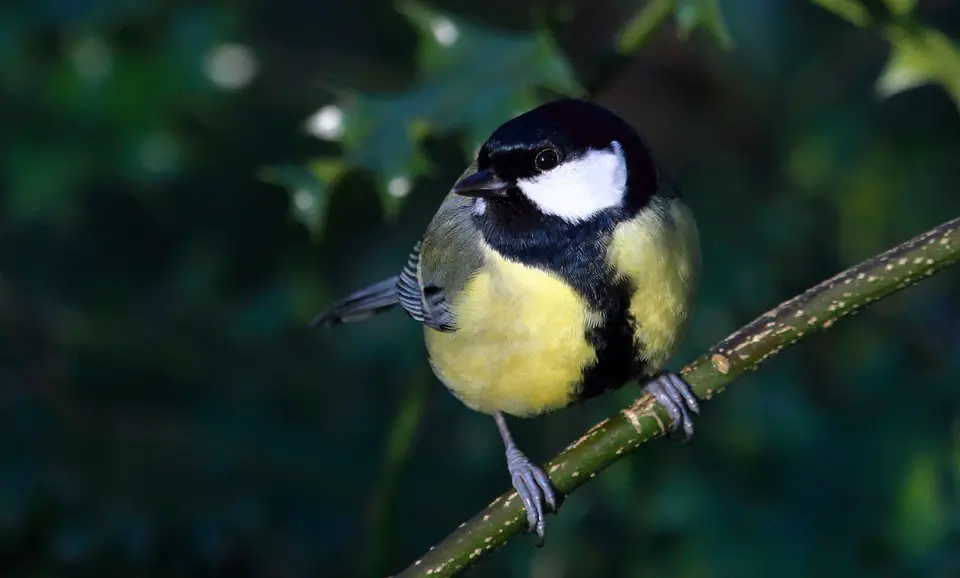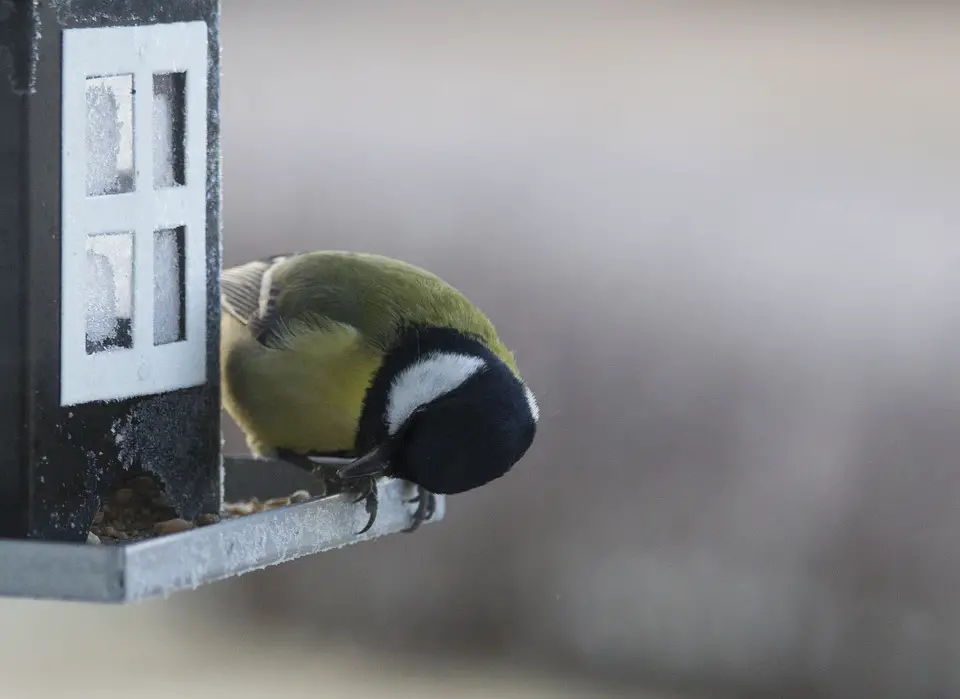Most of the birds in the tit family are easily recognised by their vibrant plumage, particularly the blue tit. It’s cousin, the great tit has a similarly striking appearance, including greenish-yellow feathers, white cheeks and a black cap.
I see other members of the tit family at my feeders regularly, yet rarely see a great tit, when I do, unlike other tits, I am sure I have seen them eat from the ground feeders.

I decided to find out why they are different and how to attract great tits to the garden.
As with all garden birds, great tits are looking for a continual source of food to supplement their natural diet. They will eat from clean tables, hanging feeders, and are the only tit that is comfortable eating from ground feeders.
Supply them with a varying mix of seeds, nuts, and mealworms, from feeders in open spaces and you should soon see an influx of great tits.
They are cavity nesters but will readily make use of nesting boxes. Boxes near to the trunks of trees have great success as they closely assimilate their natural habitat.
Table of Contents
Food
(We have a great article on what to feed Great Tits here)
In the wild, the great tit prefers to dine on insects and invertebrates. Caterpillars, flies, grasshoppers, and spiders are particular favourites, but they will try most insects if they can catch them.
In the winter when creatures are more scarce, the great tit will supplement its diet with seeds, nuts, and berries. Gardens with plenty of these on offer provide a greater attraction.
Hanging peanuts also attract them, in fact, their beaks have evolved since the 1970s and grown longer, probably to help them reach into feeders more easily.
As they are so gregarious, the great tits will happily spend time around humans and eat food scattered on the ground. Dried or live mealworms work wonders in my garden, the great tits make a beeline for them, over other delights on the table.
They are tough cookies and aren’t afraid of a bust-up, scaring other songbirds away if they dare to try and eat something h they have their eye on.

Great tits and nesting boxes
Although they prefer deciduous woodland, great tits are regular visits to gardens on their never-ending hunt for food. There are over 2-million in the UK and are easy to see and hear in most rural settings.
They happily use bird boxes, particularly if they’re nestled in trees but with a clear flight path. They need an entrance hole of around 28mm as they are one of the largest tits in the family. Blue tits only need 25mm.
Don’t leave it too late to hang a box, the female will be on the lookout for somewhere to lay her eggs from the winter. If there are particularly harsh cold nights she may decide to
roost overnight to stay warm and sheltered. In early spring, if she decided to move in, she will attract the male and together they will find soft materials to line the box. He will be hovering close by, often sounding his ‘teacher-teacher‘ call to remind her he is watching over, and to keep his territory safe.
Provide a drink
Gardens with clean, fresh water for garden birds to drink and bathe in having notably more visitors than gardens that don’t. The great tit is no exception to this rule.
Final thoughts…
Gardens with lots of lush greenery and trees appeal to the great tit, particularly any bushes or shrubs that might grow berries. Don’t worry if you just have a yard, you may still be able to attract great tits to your garden with a constant supply of both dried and live mealworms scattered on the ground.
Hang feeders filled with seed and nut mixes and you will soon have great tits eating out of your hands. Well, not literally, they might be gregarious and outgoing, but that just might be a step too far!
